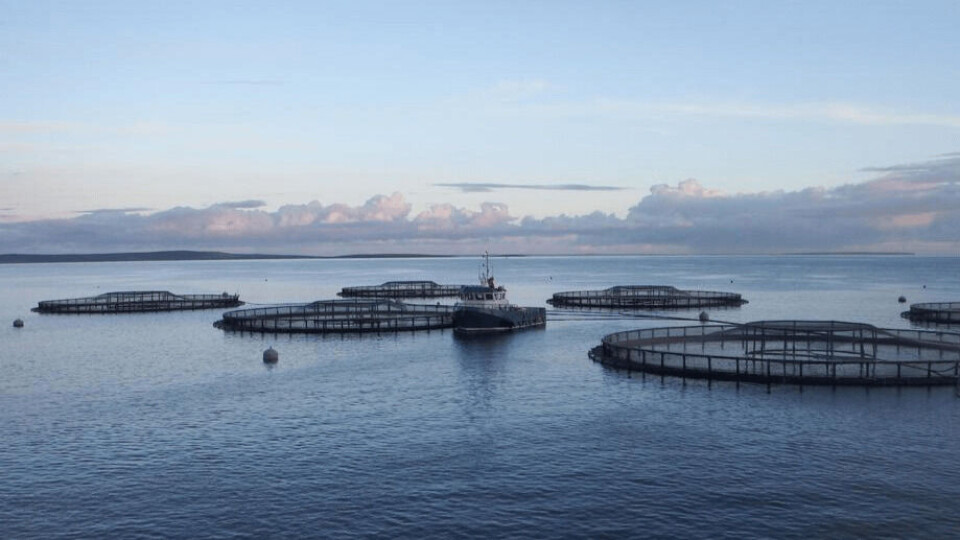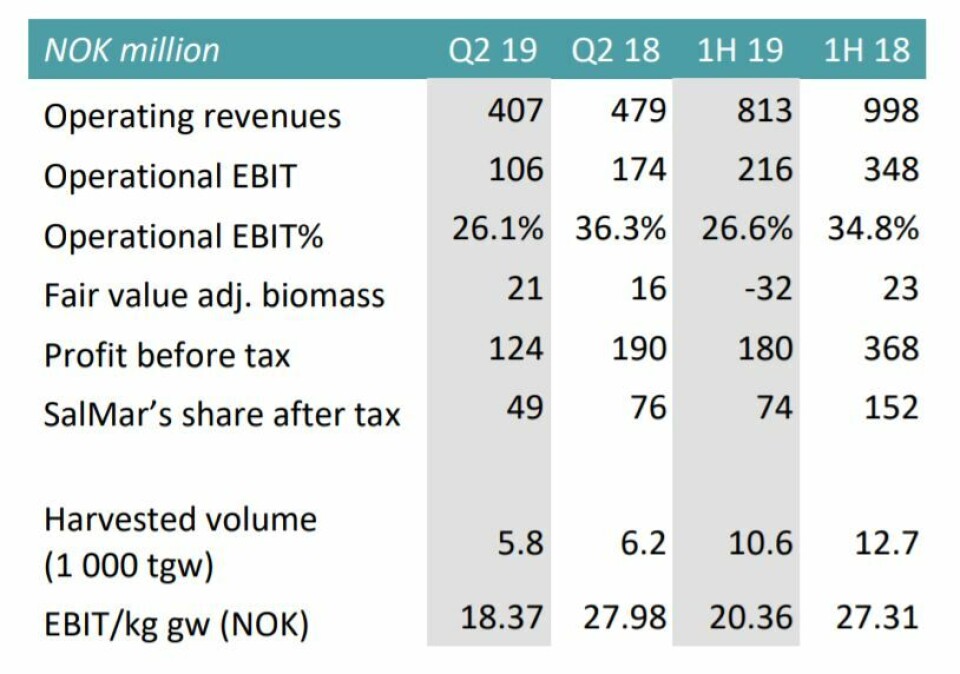
Early harvesting lowers Scottish Sea Farms’ earnings in Q2
Scottish Sea Farms harvested fewer fish and made less profit in the second quarter of this year than in the same period in 2018.
The company’s figures were listed in the second-quarter report of Norwegian salmon farmer SalMar, which shares ownership of SSF’s holding company, Norskott Havbruk, with Lerøy.
SSF generated gross operating revenues of NOK 407.4 million (£37m) in the second quarter 2019, compared with NOK 405.2m in the first quarter this year and NOK 479.3m in the second quarter last year. The year-on-year decrease is attributable largely to lower volumes and prices, said SalMar.

Scottish Sea Farms harvested around 5,800 tonnes of fish in the quarter, compared with 4,800 tonnes in the first quarter this year and 6,200 tonnes in the second quarter last year.
Lower weight
EBIT was NOK 106m (Q2 2018: NOK 174) and profit before tax was NOK 124m (NOK 190m). EBIT per kilo was NOK 18.37 (NOK 27.98).
Operations during Q2 2019 were affected by earlier-than-planned harvesting of fish to reduce the risk of biological issues. This resulted in a lower average weight for the fish harvested, which affected both costs and price achievement, reported SalMar.
SSF has maintained its harvest guidance of around 30,000 tonnes for the whole of 2019.
Algal bloom
SalMar’s Q2 operational EBIT was NOK 989.8m compared with NOK 878.6 million in the same period last year.
The company attributed the improvement to effective operations, lower production costs and a higher volume harvested by its Central Norway division. At the same time, biological challenges resulted in a more demanding quarter than expected for its Northern Norway division.
Fish there were harvested earlier than planned in order to reduce biological risk, in particular related to the algal bloom at the end of May. The premature harvesting resulted in a lower average weight for the fish, and therefore lower price achievement and higher costs.

‘Positive trend’
SalMar said the algal bloom also negatively impacted price achievement, since several fish farmers were forced to harvest their stocks early, causing a large amount of salmon in the market.
The company expects a substantially lower volume from Northern Norway in the third quarter, with consequently higher cost, but both volume and costs are expected to improve in the last three months of 2019.
“It is very good to see that Central Norway continues the positive trend and shows that good biological performance gives good financial results,” said chief executive Olav-Andreas Ervik in a press release.
NOK 3.3 billion
“Biological challenges made the quarter demanding for Northern Norway, where we chose to harvest the fish earlier than planned to minimise the biological risk, but we see a clear improvement from the fourth quarter.”
Gross operating revenues totalled NOK 3.3 billion in Q2, up from NOK 2.9 billion in the same period last year.
SalMar harvested 41,400 tonnes during the quarter, compared with 34,000 tonnes in Q2 2018. It achieved an operational EBIT per kg of NOK 23.90, down NOK 1.90 per kg on the same period last year.
155,000 tonnes
The decrease is largely attributable to weaker results from Northern Norway, as well as the consolidation of the Icelandic producer Arnarlax with effect from 1 February 2019.
SalMar still expects to harvest 155,000 tonnes in 2019 as a whole - 145,000 tonnes in Norway and 10,000 tonnes in Iceland (Arnarlax) - but has increased its harvest guidance for Central Norway to 97,000 tonnes and lowered its guidance for Northern Norway to 48,000 tonnes.
Scottish Sea Farms is classed as an associate company, and SalMar’s share of its volumes are therefore counted separately.























































